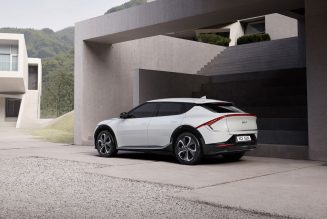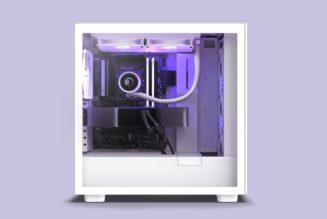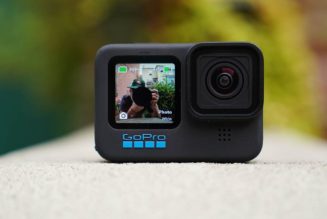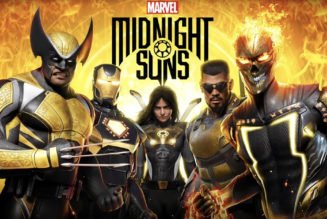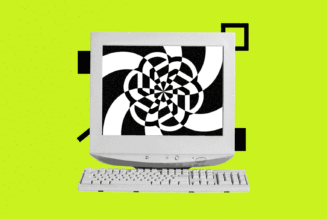Ever since the first Chromebook Pixel hit shelves in 2013, it’s had a special place in the ChromeOS community’s hearts. It wasn’t just a product — it was a sneak peek at what the Chromebook market could become.
Unfortunately for those fans, the Pixelbook line is no more. A new Pixelbook (the spiritual successor to the original Chromebook Pixel) was “far along in development and expected to debut next year,” my colleagues Alex Heath and David Pierce reported earlier this week. But the project has been cut “as part of recent cost-cutting measures.”
“We are committed to building and supporting a portfolio of Google products that are innovative and helpful for our users,” Google told The Verge in a statement. It would seem that this portfolio doesn’t include Chromebooks anymore, at least not in the short term.
A cynic might see this announcement as the end of the high-end Chromebook space (Google makes ChromeOS, after all). And it is true that the consumer market for ChromeOS, in general, is getting smaller and that convertible laptops (which the Pixelbook was) are falling out of fashion.
I think there’s another view, though: the Pixelbook achieved its purpose, and that purpose is no longer needed. It’s a view that’s more compatible with the approach Google has often taken with the Pixel hardware line throughout the years.
“We are committed to building and supporting a portfolio of Google products that are innovative and helpful for our users.”
2013, the year of the Chromebook Pixel, was a different world. That device wasn’t really a device. It was a vision. I mean, the thing had a starting price of $1,299. Even today’s HP Elite Dragonfly Chromebook, criticized widely for its high price despite being basically flawless hardware, starts $150 lower than that (and that’s with inflation and everything else). 2013 ChromeOS — I think even the most diehard fans can agree — was not in anywhere close to the place it is now.
It seems clear that Google didn’t intend to make a device that people might, shall we say, purchase. The goal was to show manufacturers what could be done.
The 2017 Pixelbook was the same sort of deal. Its chassis was exceptional — not just among Chromebooks but among laptops in general. It was under half an inch thick, and it was fanless before fanless was a trend. I still remember the day the review unit arrived in the office I was working in at the time. I remember it being passed around the desks, every employee wanting a chance to see it for themselves. We’d basically only seen ChromeOS on ugly clunkers up to that point — that it could power such a groundbreaking chassis was a novel idea to much of the public. Nobody planned on purchasing it, but everyone wanted a look.
The goal was to show other manufacturers what could be done
Was the Pixelbook a bestseller? I can’t imagine — and, of course, Google hasn’t made another one. The Pixelbook Go was great, but it occupied a different product category (and slightly lower price point) than its predecessor. It also didn’t come close to the lust-worthy and envelope-pushing design the 2017 model pioneered.
But I do think the Pixelbook led to a certain mindset shift among many in tech media. It didn’t just illustrate that ChromeOS could exist and thrive in a fancy chassis. It planted the idea in their heads that there could be a world — not in 2017, but maybe in the not-so-distant future — where paying $1,000 for a ChromeOS device wasn’t totally crazy. As Mashable wrote in its glowing review, “The majority of Chromebooks are and probably will always be under-powered garbage. But that doesn’t mean every Chromebook needs to be.”
%2Fcdn.vox-cdn.com%2Fuploads%2Fchorus_asset%2Ffile%2F23663023%2Fakrales_220624_5312_0093.jpg&w=2400&q=75)
We’ve told this story about Pixel-branded products before. Look to the Pixel phone. It’s hardly poised to become a major player in a market that Apple and Samsung very solidly dominate, but Google keeps putting them out to showcase its operating system on its own terms. The upcoming Pixel Watch, hot off of Google’s acquisition of Fitbit, is also poised to enter a market where Android devices haven’t been at their best, where an example may be sorely needed.
2022 is not 2013. There are now ChromeOS options in the HP Dragonfly and Lenovo ThinkPad lines — two of the most established premium laptop families in history from two undeniable leaders in building high-quality hardware. Asus has been doing all kinds of funky things with the operating system, including the premium Chromebook CX5 (which is virtually indistinguishable from a high-end Windows laptop) and the Chromebook Detachable CM3 with a dual-folding kickstand.
The ChromeOS space no longer needs Google to lead by example. Other companies are now putting the operating system in chassis that rival those of the best Windows-powered devices. Whether consumers will buy them now is another story.
